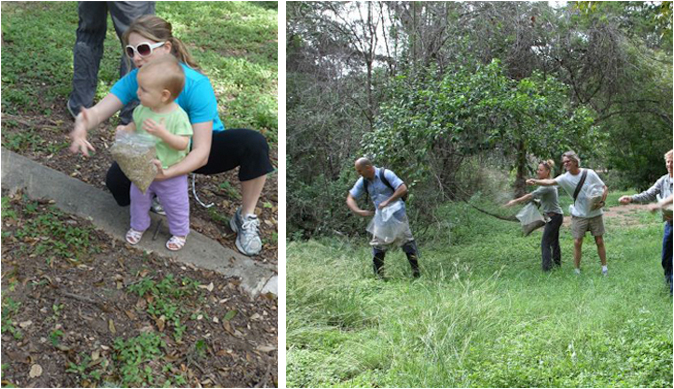Where Have All The Good Seeds Gone
As people migrate to a new area they intentionally or unintentionally bring plants and seeds from lands far off. Due to a variety of physical and environmental limitations many of these plants would not have been able to relocate at such great distances without the assistance of a modern biped. Whether transported to their new locations for food, medicine, aesthetics, or accidentally their arrival can be seen as an invasion on the previous plant community which is already under attack by the concurrent changes in land use (farming, ranching, urbanization).
A majority of these new plants continue to require special attention to grow and spread but a few have great reproductive success without the need for human assistance. These plants have a strong advantage over the pre-existing flora in the newly developing environment. As much of the land is cleared for homes and crops, grazed by cattle, or hunted for food and trophy, the pressures on the plant community changes.

Non-native plants like Giant Cane and Bermuda grass invade an Austin park
The new plants provided by the nursery trade have been chosen for their current aesthetic appeal and ease of propagation. Prior to introduction, there is little research performed to see how a foreign plant species will behave in its new environment. Lacking the natural control from disease, parasites, and herbivory that they would find in their native environment these new plants flourish, sometimes permanently displacing the historic plant community.
There is a common perception that if the newly introduced invasive plants are removed from the environment then native plants will come back from the seed bank. A seed bank refers to seeds that are in the soil waiting to germinate. In an urban/suburban setting many of the historically native plants are no longer present or are so greatly reduced that their natural seed supply is insufficient for them to regain a stronghold in their own native territory. As a result, the plant community that exists is quite novel and might not provide the same environmental and ecological functions. Therefore, it is important to have a restoration plan in place prior to removing invasive plants that includes methods like seeding or planting seedlings of the native plants appropriate for the area.

Volunteers spreading native seeds along Blunn Creek
Thanks to the diligent efforts of botanists and scientists before us we have the advantage of knowing which plants were here prior to our infusion with the native landscape. With awareness comes responsibility. Proper land stewardship can reverse the tide of plant invasion and restore Austin’s landscape to a Texas look and function.


We can all appreciate the beauty of Texas native wildflowers
The City of Austin has resources to help people choose aesthetically pleasing plants for their gardens that are based in Texas’ natural history. Additionally, community members who are involved in restoration programs like the Keep Austin Beautiful Adopt-a-Creek program or the Austin Parks Foundation Adopt-a-Park program can find more information about plants for these naturalized areas on our riparian restoration webpage.
